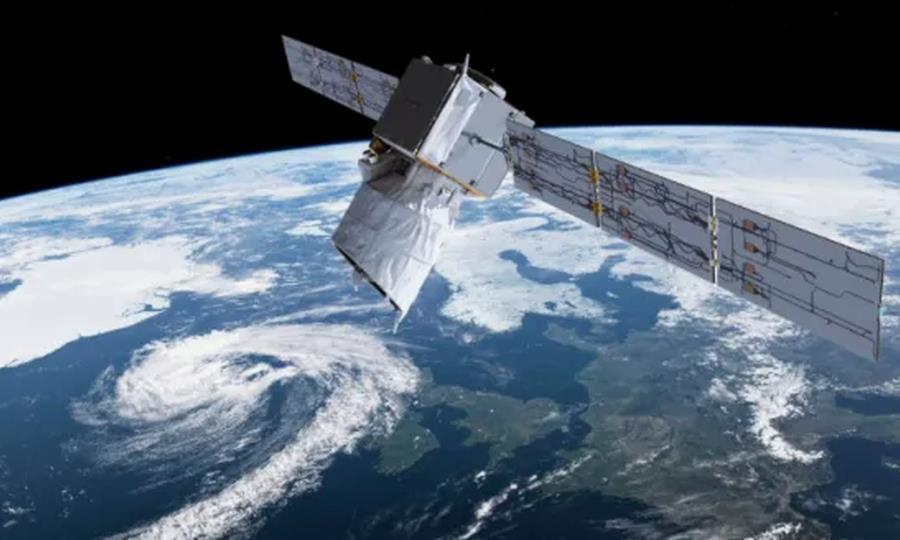
Satellite disaster averted after SpaceX refuses to move
(MENAFN- Asia Times) The European Space Agency (ESA) averted a disastrous collision above the earth in a bizarre standoff with a SpaceX satellite.
According to Forbes magazine, the ESA said one of its satellites was forced to avoid a satellite from Elon Musk's Starlink constellation, raising concerns about the impact of Starlink on low Earth orbit operations, after SpaceX refused to move.
On Monday, September 2, ESA's Aeolus Earth observation satellite had to use its thrusters to move itself out of a potential collision with a Starlink space internet satellite dubbed 'Starlink 44,' in a high-stakes game of "space chicken."
The dramatic incident took place 320 kilometers above Earth as the orbital paths of the two vehicles intercepted each other. Aeolus returned to its operational orbit after the maneuver, the report said.
According to Holger Krag, head of the Space Debris Office at ESA, the risk of collision between the two satellites was 1 in 1,000 – ten times higher than the threshold that requires a collision avoidance maneuver. However, despite Aeolus occupying this region of space nine months before Starlink 44, SpaceX declined to move their satellite after the two were alerted to the impact risk by the U.S. military, who monitor space traffic.
'Based on this we informed SpaceX, who replied and said that they do not plan to take action,' says Krag, who said SpaceX informed them via email – the first contact that had been made with SpaceX, despite repeated attempts by Krag and his team to get in touch since Starlink launched. 'It was at least clear who had to react. So we decided to react because the collision was close to 1 in 1,000, which was ten times higher than our threshold.'
As to why SpaceX refused to move their satellite and has avoided comment since, is not entirely clear, the report said.
The Aeolus satellite, weighing in at more than 1,300 kg, was launched on August 22, 2018, whereas SpaceX launched its first batch of 60 Starlink satellites on May 23 this year. While most of those had their orbits raised from 440 km to 550 km, Starlink 44 was lowered to near 320 km to practice deorbit techniques.
Thus Starlink 44 entered a region of space that Aeolus had occupied first. However, there are no rules in space that require one or another operator to move their satellite when there is a risk of collision. This, says Krag, is something that ESA hopes will be addressed in the near future.
'There are no rules in space,' he says. 'Nobody did anything wrong. Space is there for everybody to use. There's no rule that somebody was first here. Basically on every orbit you can encounter other objects. Space is not organized. And so we believe we need technology to manage this traffic.'
SpaceX has touted the automated collision avoidance systems on board its Starlink satellites, which are designed to beam high-speed internet around the world. It says that the satellites, each weighing 227 kilograms, are 'capable of tracking on-orbit debris and autonomously avoiding collision.' But for this incident, this system does not seem to have been used for some reason.
ESA noted that it performed 28 collision avoidance maneuvers in 2018, but it was mostly to avoid dead satellites or bits of space debris. Maneuvers to avoid active satellites were 'very rare,' they said, but the arrival of mega constellations like Starlink raises concerns that many more such maneuvers will be needed in future.
Collisions between satellites are not unheard of; perhaps the most famous incident was between the US Iridium 33 satellite and the defunct Russian Kosmos-2251 satellite in 2009, which resulted in thousands of pieces of debris. And many have noted that our systems in place today are simply not adequate to cope with upcoming mega constellations, which will far exceed the number of 2,000 active satellites currently in orbit, the report said.
Other companies like OneWeb, Amazon, and Kepler Communications have plans for thousands of space internet satellites.
'I would say [this incident] underlines the uncertainty about the impact of these mega constellations,' says Jonathan McDowell from the Harvard-Smithsonian Center for Astrophysics. 'Operating in LEO [low Earth orbit] will now require constant vigilance by all satellite operators.'

Legal Disclaimer:
MENAFN provides the
information “as is” without warranty of any kind. We do not accept
any responsibility or liability for the accuracy, content, images,
videos, licenses, completeness, legality, or reliability of the information
contained in this article. If you have any complaints or copyright
issues related to this article, kindly contact the provider above.


















Comments
No comment